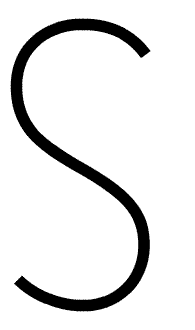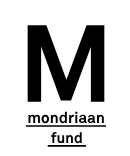
Traditionally, the term resolution, when used in relation to the image, describes a qualitative and quantitative measure of clarity and detail.
However, with the introduction of networked and synthetic images, the image has changed into a procedural, data-driven infrastructure.
Via continuous process of recalibration, adaptation and compromise at scale, in all levels of the pipeline (capture, render, dissemination, reception) the process of resolving takes dominance over a final or fixed image.
A resolution is no longer a static, quantifiable measure but a dynamic, responsive process that governs the fidelity, legibility and meaning of the what may become, obsolete: the image, as it makes space for the resolving of renders.
////////////////////////////
im/possible images
is a research project in the framework of my Arts at CERN COLLIDE Barcelona award.
curated by Monica Bello. 2021
However, with the introduction of networked and synthetic images, the image has changed into a procedural, data-driven infrastructure.
Via continuous process of recalibration, adaptation and compromise at scale, in all levels of the pipeline (capture, render, dissemination, reception) the process of resolving takes dominance over a final or fixed image.
A resolution is no longer a static, quantifiable measure but a dynamic, responsive process that governs the fidelity, legibility and meaning of the what may become, obsolete: the image, as it makes space for the resolving of renders.
////////////////////////////
im/possible images
is a research project in the framework of my Arts at CERN COLLIDE Barcelona award.
curated by Monica Bello. 2021


With her environment momentarily resolved,
the Angel finds space to reflect.
She sees now, how images are just data in process; shaped by stitched limitations, filters, bends, and breaks, imposed by the moment/um of a governing protocol,
forever deferring perfection.
Resolutions never deliver a final, static image; they are nothing but momentary myth within the procedural gospel of progress.
The Angel assumes her role as media archaeologist from the future and begins collecting various types of limits that exist within the image-render pipeline. She hopes that these lines will provide a way to start her collection of compromised, unsupported, unknown or forgotten image renders:
a scanline, a separator, a progress bar, a ruler, a mesh, an axis, a vector, a link, a loop,
...a generator, a discriminator...?
From these lines the Angel assembles a Binary Large Object or BLOb: an uncommitted form that does not move upwards, but instead dissolves hierarchy into ambiguous dimension; it is best described as a fluid stack of shifting moiré patterns. The BLOb is an ever-growing environment, or living archive for all im/possible image pipelines.
Standing in front of the BLOb, the Angel considers how resolutions not only consolidate our technologies, but also dictate constraints on how we cannot - or choose not to - use them. They shape how we render images, while foreclosing alternative imaging methods.
Her next mission is clear: she will map every limit in the image-processing pipeline to compile an Atlas of Destitute of Vision, a collection of key observations for Resolution Studies, documenting how every technology defines what remains forever unrendered and unseen.
Chapters and maps in the Atlas for Destitute Vision:
RESOLUTION DISPUTE 0000 : HOROLOGY
RESOLUTION DISPUTE 0001 : MATERIALITY
* Vernacular of File Formats
* Ecology of Compression Complexities (by a BLOb)
RESOLUTION DISPUTE 0010 : GENEALOGY
1. A GENEALOGY OF THE COLOUR TEST CARD
* Lexicon of Glitch Affect
2. A GENEALOGY OF MACROBLOCK / FROM ARTIFACT TO A/EFFECT.
* De/Calibration Army
RESOLUTION DISPUTE 0011 : SCALE (SCALING AS VIOLENCE)
* FF D8 De/Calibration Target
a repository for a genealogy of macroblocking artifacts
RESOLUTION DISPUTE 0100 : SCOPE
(OR HOW HABIT DELINEATES IM/POSSIBILITY AND IN/VISIBILITY)
* Spectrum of Lost and Un/Named colours
RESOLUTION DISPUTE 0101 : CRISIS (THE ADDITIVE CRISIS OF THE IMAGE)
1. TRANSITION FROM ANALOGUE TO DIGITAL IMAGE PROCESSING
2. PLATFORMED/NETWORKED IMAGE
3. CRISIS OF THE SYNTHETIC/HYPER IMAGE
* BLOb of im/possible Images
the Angel finds space to reflect.
She sees now, how images are just data in process; shaped by stitched limitations, filters, bends, and breaks, imposed by the moment/um of a governing protocol,
forever deferring perfection.
Resolutions never deliver a final, static image; they are nothing but momentary myth within the procedural gospel of progress.
The Angel assumes her role as media archaeologist from the future and begins collecting various types of limits that exist within the image-render pipeline. She hopes that these lines will provide a way to start her collection of compromised, unsupported, unknown or forgotten image renders:
a scanline, a separator, a progress bar, a ruler, a mesh, an axis, a vector, a link, a loop,
...a generator, a discriminator...?
From these lines the Angel assembles a Binary Large Object or BLOb: an uncommitted form that does not move upwards, but instead dissolves hierarchy into ambiguous dimension; it is best described as a fluid stack of shifting moiré patterns. The BLOb is an ever-growing environment, or living archive for all im/possible image pipelines.
Standing in front of the BLOb, the Angel considers how resolutions not only consolidate our technologies, but also dictate constraints on how we cannot - or choose not to - use them. They shape how we render images, while foreclosing alternative imaging methods.
Her next mission is clear: she will map every limit in the image-processing pipeline to compile an Atlas of Destitute of Vision, a collection of key observations for Resolution Studies, documenting how every technology defines what remains forever unrendered and unseen.
Chapters and maps in the Atlas for Destitute Vision:
RESOLUTION DISPUTE 0000 : HOROLOGY
RESOLUTION DISPUTE 0001 : MATERIALITY
* Vernacular of File Formats
* Ecology of Compression Complexities (by a BLOb)
RESOLUTION DISPUTE 0010 : GENEALOGY
1. A GENEALOGY OF THE COLOUR TEST CARD
* Lexicon of Glitch Affect
2. A GENEALOGY OF MACROBLOCK / FROM ARTIFACT TO A/EFFECT.
* De/Calibration Army
RESOLUTION DISPUTE 0011 : SCALE (SCALING AS VIOLENCE)
* FF D8 De/Calibration Target
a repository for a genealogy of macroblocking artifacts
RESOLUTION DISPUTE 0100 : SCOPE
(OR HOW HABIT DELINEATES IM/POSSIBILITY AND IN/VISIBILITY)
* Spectrum of Lost and Un/Named colours
RESOLUTION DISPUTE 0101 : CRISIS (THE ADDITIVE CRISIS OF THE IMAGE)
1. TRANSITION FROM ANALOGUE TO DIGITAL IMAGE PROCESSING
2. PLATFORMED/NETWORKED IMAGE
3. CRISIS OF THE SYNTHETIC/HYPER IMAGE
* BLOb of im/possible Images

︎︎︎︎︎︎︎︎︎︎︎ ︎ ︎︎︎︎︎︎︎︎︎︎︎ ︎ ︎︎︎︎︎︎︎︎︎︎︎ ︎ ︎︎︎︎︎︎︎︎︎︎︎ ︎ ︎︎︎︎︎︎︎︎︎︎︎ ︎ ︎︎︎︎︎︎︎︎︎︎︎ ︎
Rosa Menkman is a Dutch artist and researcher of resolutions. Her work focuses on noise artifacts resulting from accidents in both analogue and digital media.
The journey of her protagonist, the Angel of History—inspired by Paul Klee’s 1920 monoprint, Angelus Novus, and conceptualized by Walter Benjamin in 1940—functions as a foundational framework for her explorations of image processing technologies. As the machines upgrade, the Angel finds herself caught in the ripple of their distortions, unable to render the world around her.
Complementing her practice, she published Glitch Moment/um (INC, 2011), a book on the exploitation and popularization of glitch artifacts. She further explored the politics of image processing in Beyond Resolution (i.R.D., 2020). In this book, Rosa describes how the standardization of resolutions promotes efficiency, order, and functionality, but also involves compromises, resulting in the obfuscation of alternative ways of rendering.
In 2019, Rosa won the Collide Arts at CERN Barcelona award, which inspired her recent research into im/possible images, consolidated in the im/possible images reader (published by the i.R.D. & Lothringer, with support from V2, 2022).
From 2018 to 2020, Rosa worked as Substitute Professor of Neue Medien & Visuelle Kommunikation at the Kunsthochschule Kassel.
Since 2023, she has been running the Im/Possible Lab at HEAD Geneve. Class materials can be found here; please copy <it> right!.
Recent work can be found in this pdf portfolio.
The journey of her protagonist, the Angel of History—inspired by Paul Klee’s 1920 monoprint, Angelus Novus, and conceptualized by Walter Benjamin in 1940—functions as a foundational framework for her explorations of image processing technologies. As the machines upgrade, the Angel finds herself caught in the ripple of their distortions, unable to render the world around her.
Complementing her practice, she published Glitch Moment/um (INC, 2011), a book on the exploitation and popularization of glitch artifacts. She further explored the politics of image processing in Beyond Resolution (i.R.D., 2020). In this book, Rosa describes how the standardization of resolutions promotes efficiency, order, and functionality, but also involves compromises, resulting in the obfuscation of alternative ways of rendering.
In 2019, Rosa won the Collide Arts at CERN Barcelona award, which inspired her recent research into im/possible images, consolidated in the im/possible images reader (published by the i.R.D. & Lothringer, with support from V2, 2022).
From 2018 to 2020, Rosa worked as Substitute Professor of Neue Medien & Visuelle Kommunikation at the Kunsthochschule Kassel.
Since 2023, she has been running the Im/Possible Lab at HEAD Geneve. Class materials can be found here; please copy <it> right!
Recent work can be found in this pdf portfolio.
I believe in a Copy <it> Right ethic:
“First, it’s okay to copy! Believe in the process of copying as much as you can; with all your heart is a good place to start – get into it as straight and honestly as possible. Copying is as good (I think better from this vector-view) as any other way of getting ‚’there.’ ” – NOTES ON THE AESTHETICS OF ‘copying-an-Image Processor’ – Phil Morton (1973)
This means that copying as a creative, exploratory, and educational act is free and encouraged, provided proper accreditation is given. However, when copying transforms into commodification and profit is anticipated, explicit permission must be sought, and compensation may be requested.
“First, it’s okay to copy! Believe in the process of copying as much as you can; with all your heart is a good place to start – get into it as straight and honestly as possible. Copying is as good (I think better from this vector-view) as any other way of getting ‚’there.’ ” – NOTES ON THE AESTHETICS OF ‘copying-an-Image Processor’ – Phil Morton (1973)
This means that copying as a creative, exploratory, and educational act is free and encouraged, provided proper accreditation is given. However, when copying transforms into commodification and profit is anticipated, explicit permission must be sought, and compensation may be requested.
This website was made possible with the financial support of the Stimuleringsfonds.nl (2018)
I am grateful to have received a basis stipend from the Mondriaan Fund (2018-2021) and just recently: 2023 - 2027!
I am grateful to have received a basis stipend from the Mondriaan Fund (2018-2021) and just recently: 2023 - 2027!
︎︎︎︎︎︎︎︎︎︎︎ ︎ ︎︎︎︎︎︎︎︎︎︎︎ ︎ ︎︎︎︎︎︎︎︎︎︎︎ ︎ ︎︎︎︎︎︎︎︎︎︎︎ ︎ ︎︎︎︎︎︎︎︎︎︎︎ ︎ ︎︎︎︎︎︎︎︎︎︎︎ ︎









